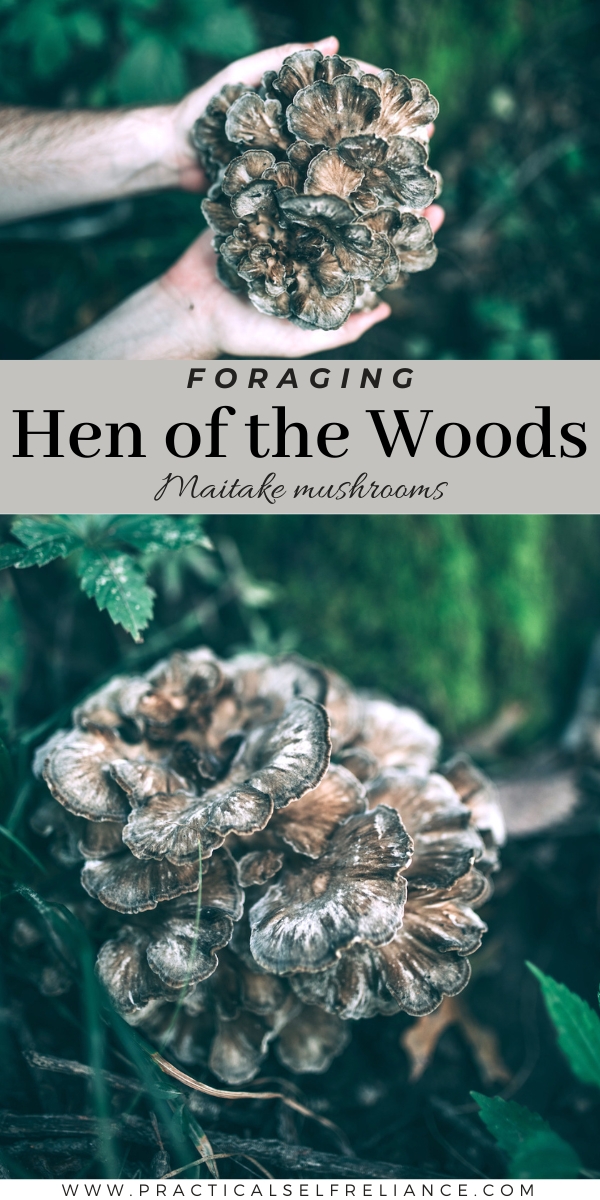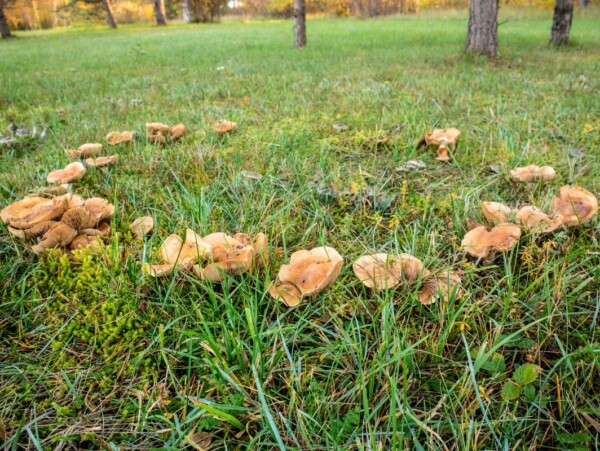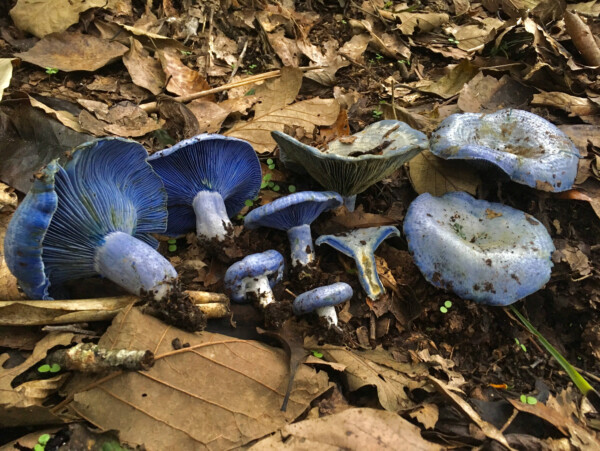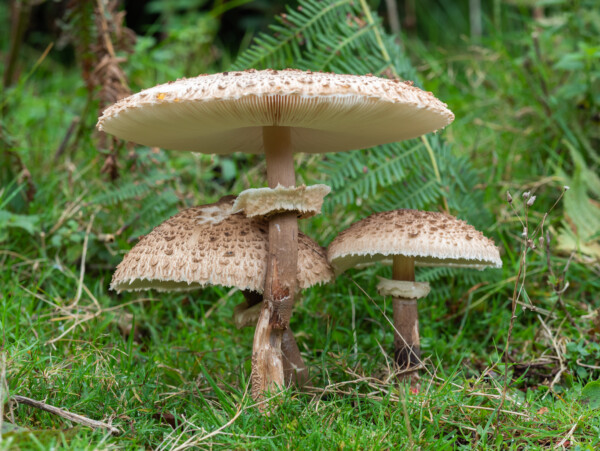Affiliate disclosure: This post may contain affiliate links. Please see our Privacy Policy.
Maitake mushrooms, commonly known as “Hen of the Woods Mushrooms,” are an easy-to-identify beginner mushroom with incredible flavor and surprising medicinal benefits.
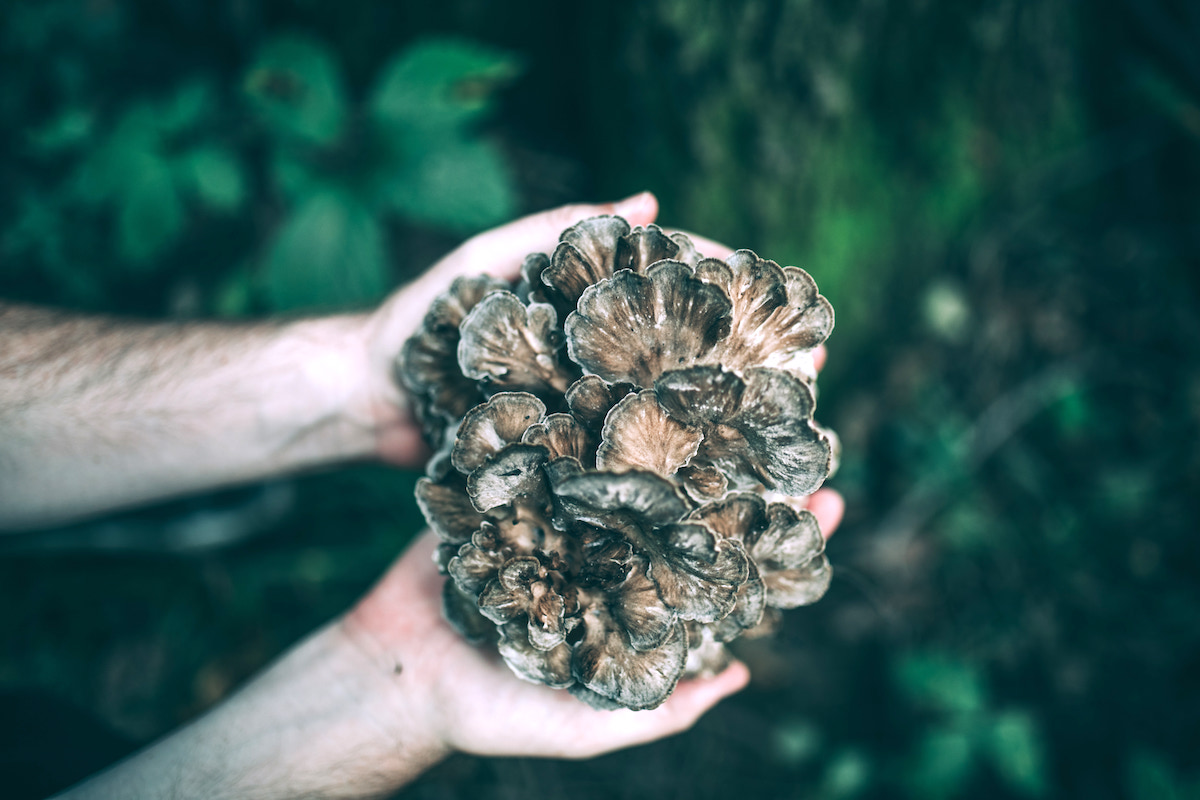
Hen of the Woods is one of the most cherished mushrooms amongst foragers and mushroom enthusiasts. It’s exceptional in so many ways and not often given the praise it deserves.
The Japanese even called it Maitake, which means “Dancing Mushroom”. Story has it, you can’t help but dance for joy when you find this mushroom!
From legendary fruitings of epic proportions, to mouthwatering flavors and potent medicinal properties, Hen of the Woods has all you could ask from a wild mushroom. Its remarkable coral-like form and irregular occurrence in nature also add thrill and excitement to the hunt. It’s easily a top bucket-list mushroom for those who haven’t had the pleasure to find one.

Before we get started… Let me remind you in more detail why this mushroom is so incredibly awesome. We’ll dive deeper into each of these later.
- Delicious umami rich flavor and meaty texture.
- Various health benefits including boosting immune health, helping regulate blood sugar, supporting heart health, improving gut-flora, and anticancer properties.
- Beautiful coral-like growths that are nothing like your typical stem-cap mushrooms.
- You can find massive fruitings with individual mushrooms weighing 20-30 lbs and patches of more than 100lbs!
- Can be preserved in various ways and makes one of the best mushroom jerkies!
With so many fantastic attributes, it’s no surprise that its scientific name “Grifola frondosa” pays homage to the majestic and mythical half-lion half-eagle known as the Griffin. This is indeed a mushroom fit for legends of its own!
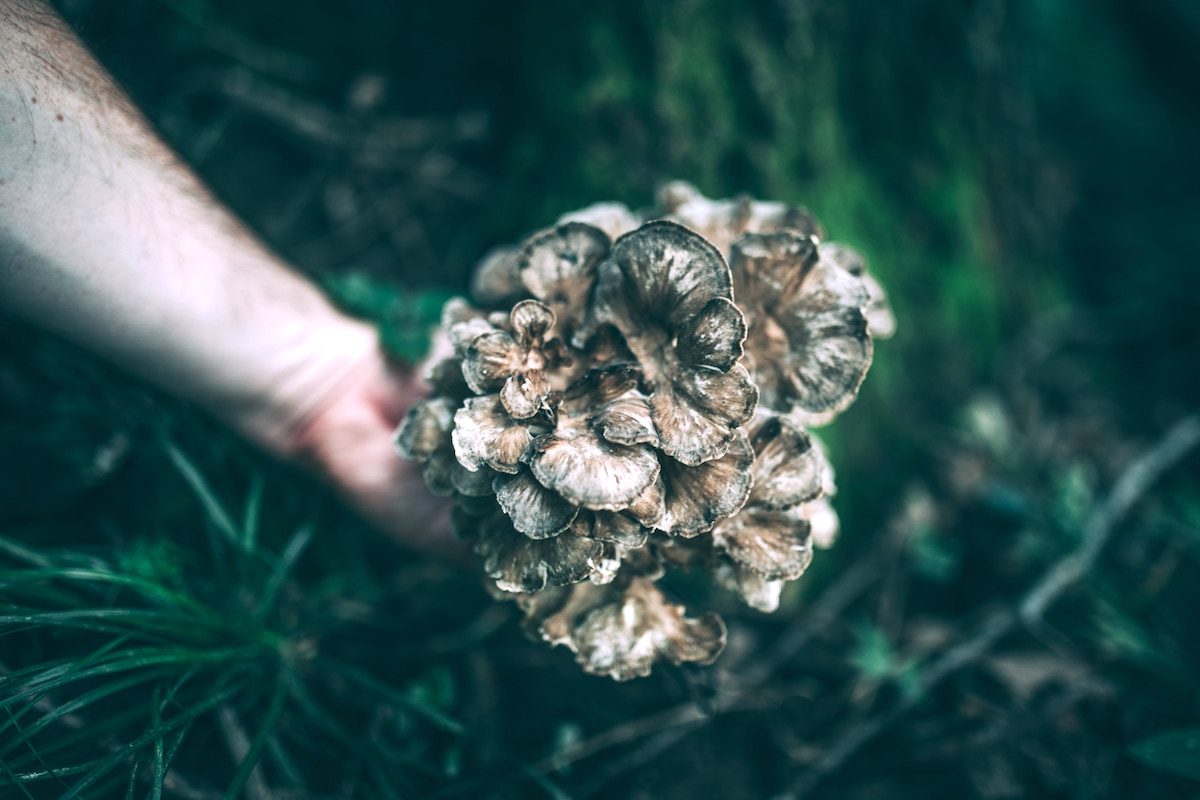
Hen of the Woods Medicinal Benefits
Hen of the Woods has unique medicinal properties sought after by herbalists, health-minded cooks, and those seeking alternative treatments to disease. While it doesn’t have the same fame as other medicinal mushrooms, and certainly isn’t as trendy, it is no less powerful than its counterparts.
Its effects are largely linked to polysaccharides known as beta-glucans which have numerous health benefits. In particular, they have shown immune boosting properties that can help in the treatment and prevention of various ailments. This has interested researchers specifically for the ability of Hen of the Woods to improve your natural immune systems defense against cancer cells.
Research also shows Hen of the Woods has some of the most potent anti-glycemic properties of any medicinal mushrooms. This, and numerous first-hand accounts, suggest that Hen of the Woods may help in treating symptoms of diabetes.
Hen of the Woods is also high in antioxidants and may have anti-inflammatory properties. Some studies suggest Hen of the Woods may also reduce cholesterol and help in the reduction of blood pressure.
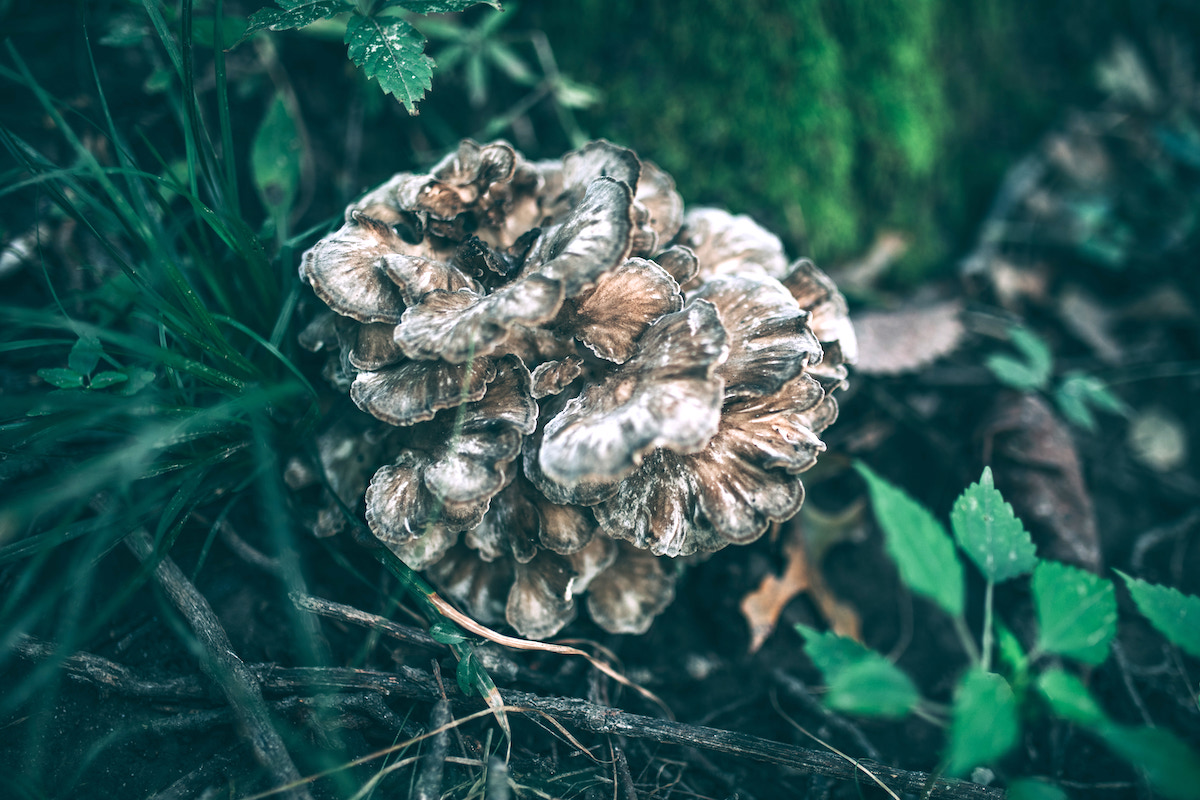
Where to Find Hen of the Woods Mushrooms
If you’re very lucky, you could perhaps randomly stumble onto a large flush of Hen of the Woods. Maybe you accumulated mushroom-karma by picking up trash last time you were in the woods, or perhaps the fungi-spirits were just feeling extra generous.
The reality is though, Hen of the Woods is a relatively uncommon mushroom compared to other edibles we forage. It likes a very specific habitat, which tends to be rather limited, even within its native range. Many foragers spend years looking before they find this precious fungal gem.
If you really want to find Hen of the Woods, you need a game plan. You’ve got to get your ecological-detective suit on and go on this hunt strategically. There is no secret formula or recipe for finding this mushroom, but you do need a logical approach and understanding of its ecology. That, and you have to put your time in scouting locations.
After all, the best foragers aren’t those with keen eyes or special “mushroom senses”, but those who spent countless days discovering their spots.
Thankfully, once you find Hen of the Woods, you can add it to your repertoire of secret locations. This is a mushroom that tends to fruit reliably year after year in the very same place. As long as there aren’t other foragers who know about it, you can dependably harvest from this location every fall.
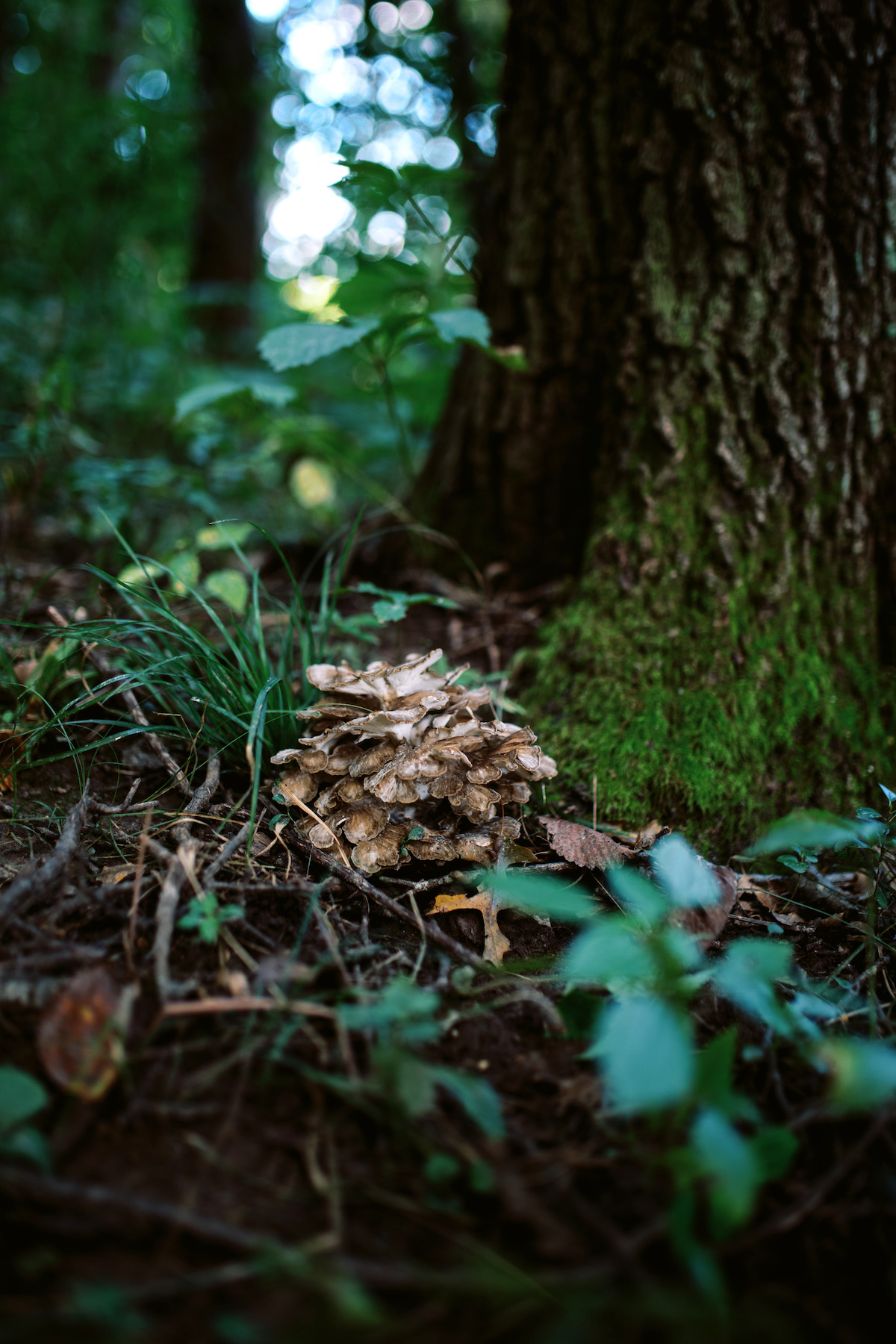
Distribution and Range
Hen of the Woods is native to eastern North America, Europe, and temperate regions of Asia.
In the eastern United States its distribution is wide-spread east of the great plains. Some hotspots include the Appalachian Mountains, The Great Lake Region, and other heavily forested/mountainous regions with old hardwood forests. It is very unusual for it to occur within 100 miles of the Gulf of Mexico and it is not known from Florida.
In Canada it is most known from the south-eastern regions surrounding Toronto, Ottawa, and Montreal although it has been found as far west as Winnipeg. It is widespread in Europe and also found in temperate Asia.
In North America it is not found west of the Rockies, although it has been found before in association with non-native oaks planted over +150 years ago. It is also never found with conifers and not known to occur in the southern Hemisphere.
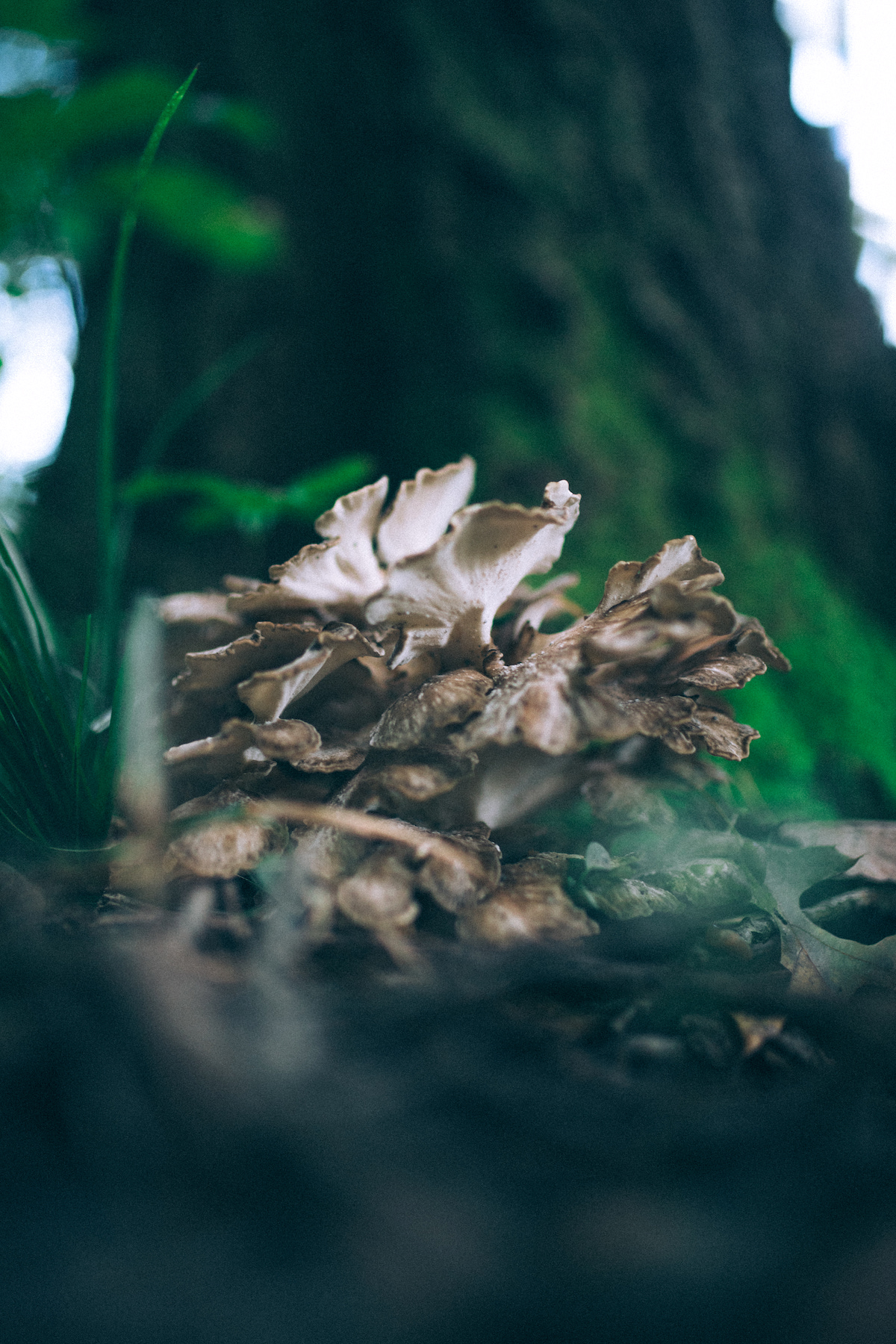
Habitat and Ecology
Hen of the Woods is always found alongside old hardwood trees. Predominantly it is found with Oaks but also Maples, Chestnuts, and other hardwood species.
While many other mushrooms I forage, like Chanterelles and Boletes, form beneficial relationships with its tree host, Hen of the Woods is different. This mushroom actually infects the tree’s and is considered a pathogen! It will rot the base of the tree and could lead to potentially lethal damage.
It’s believed the mushroom may already infect trees at a young age, but remain asymptomatic until the tree is at least 100 years of age. For this reason it is best to look for Hen of the Woods in rather old and well protected woods. It usually grows at the base of an individual living tree, but it can also be found growing directly from dead stumps as well.
It is not unheard of to find this mushroom fruiting from the base of old legacy oaks planted in urban areas.
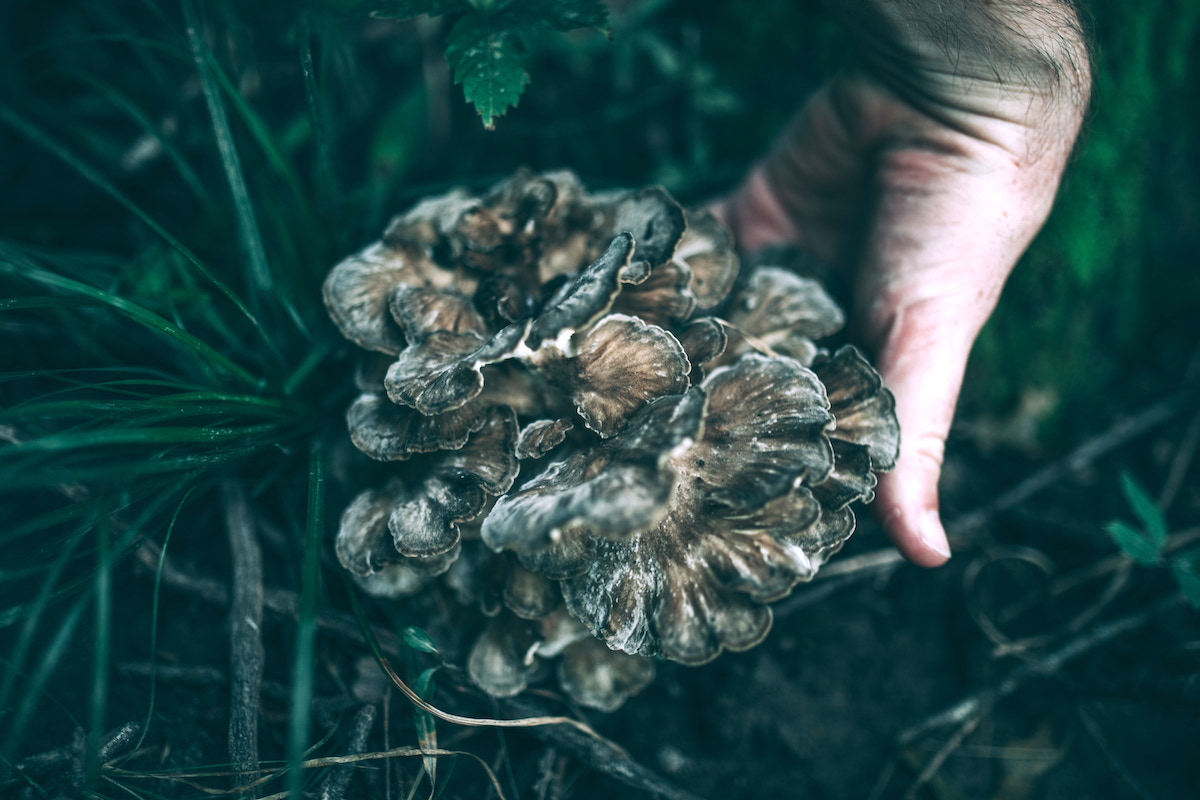
When to Forage Hen of the Woods Mushrooms
Hen of the Woods occurs in the fall during the peak of mushroom season. It can often be found as early as August and up til November if you’re lucky. While it can be found in December, usually by this time the mushrooms are in no condition to be eaten. The peak season usually occurs around the end of September to October. Of course, like all mushrooms, the seasonality is highly dependent on the yearly climatic conditions.
Thankfully, if you don’t happen to be lucky enough to stumble upon a flush of Hen of the Woods, there are plenty of mushrooms which fruit at this same time of the year in hardwood forests. Chanterelles, Black Trumpets, Yellow Feet, Hedgehogs, Lactarius Indigo, Oyster Mushrooms, and many more edible species fruit during this time of the year in similar forests.
As long as you know some of these classic wild edible mushroom species, you won’t be going home empty handed!
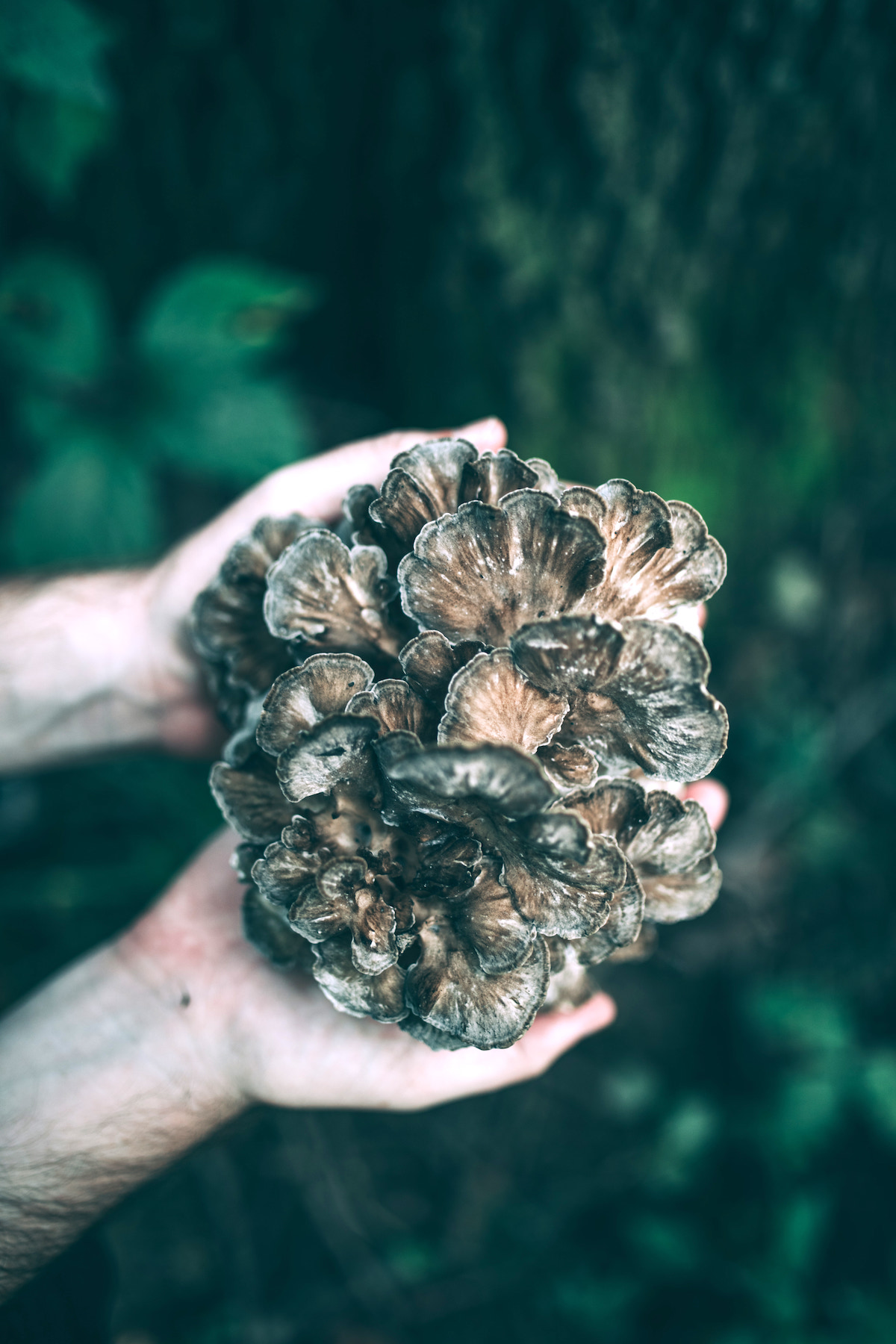
Identifying Hen of the Woods Mushrooms
Hen of the Woods are spectacular and unique looking mushrooms. They are not your typical cap and stem mushroom, instead they grow in the form of large coral-like rosettes which can be up to 2 feet in diameter!
A large mushroom like this can weigh up to 20-30 pounds. You often find several clusters within a small area surrounding its host tree.
Most often, they’re much smaller, but you can dream bragging about big finds as you harvest smaller mushroom clusters.
While from the top they look delicate and feathery, when you flip them over you’ll find a sturdy fleshy stalk that connects all the “feathers” on your hen of the woods.
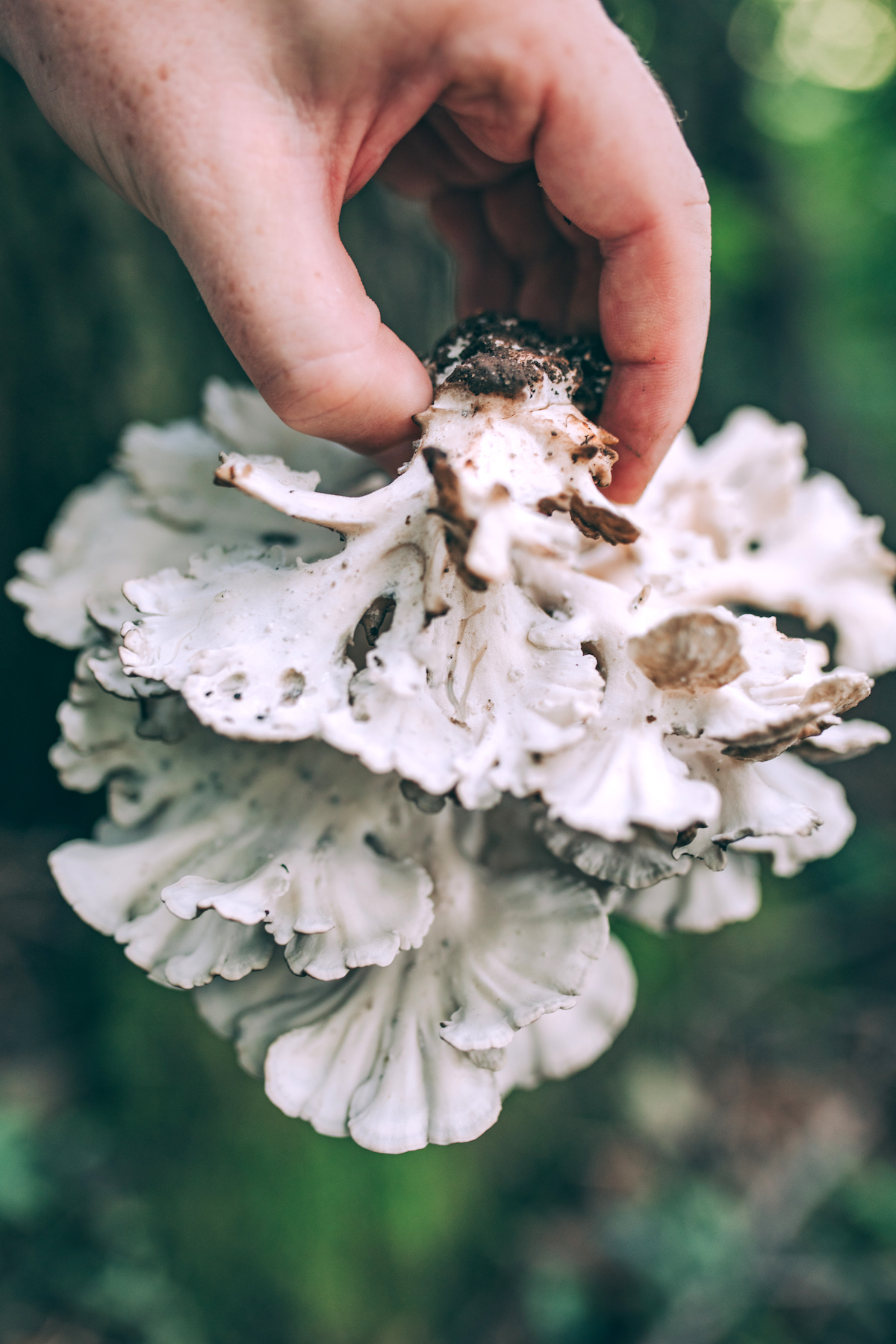
To many foragers’ surprise, the name “Hen of the Woods” doesn’t actually reference a chicken-like flavor, but instead the vague resemblance of a hen with ruffled feathers.
Look closely, and you’ll see the delicate frilled edges of each individual mushroom frond. They do indeed look like a tuft of hens feathers.
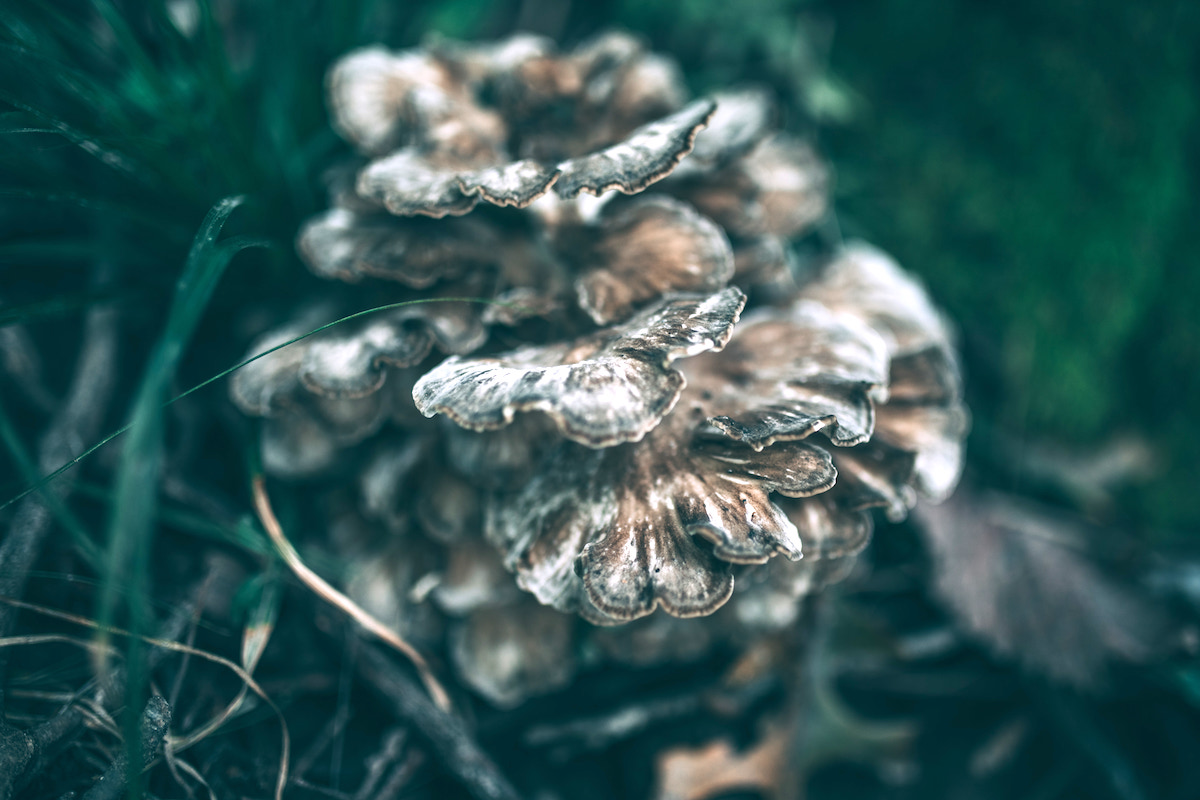
The mushroom can be a foot tall and is made of many individual caps 2-4 inches in size that grow from interlocking stems.The caps are fleshy, fan shaped, and slightly wavy at the margin. All the caps are connected to a single trunk-like stem.
The upper surface of the mushroom is smokey-gray to hazel-brown, while the underside is white and has many fine pores.
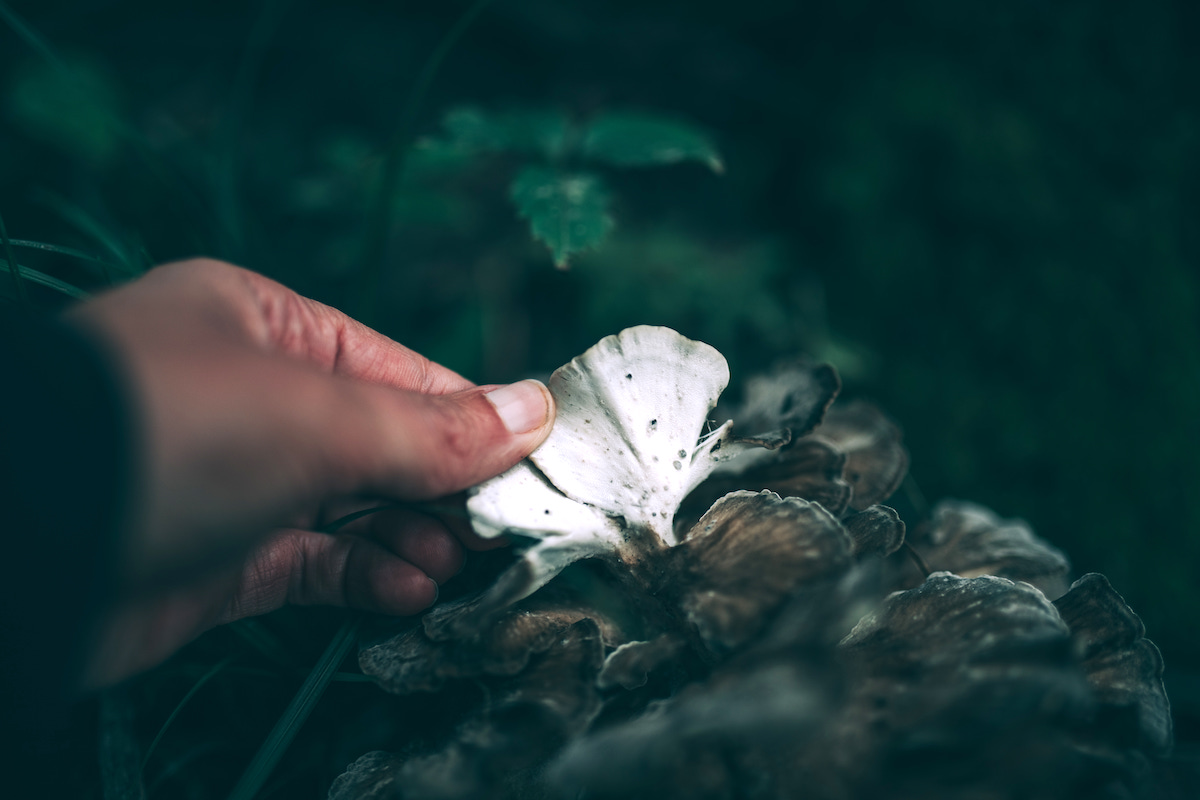
The younger mushrooms are dense-clusters and have relatively soft flesh while older specimens become tough, elastic, and are structurally more open. Younger specimens also have white margins along the cap, indicating new growth is still occurring.
To recap, the main identification features of Hen of the Woods include:
- Growth form in coral-like clusters, typically from 6” in diameter up to 2 feet.
- Each cluster has many fleshy fan-shaped caps with interlocking stems.
- The color of the upper surface ranges from smokey-gray to hazel brown.
- The underside is white and has many minuscule pores.
- In younger specimens the margin of each cap is white.
- Fleshy is creamy white and never stains black.
- Always found growing alongside older hardwood trees, particularly Oak.
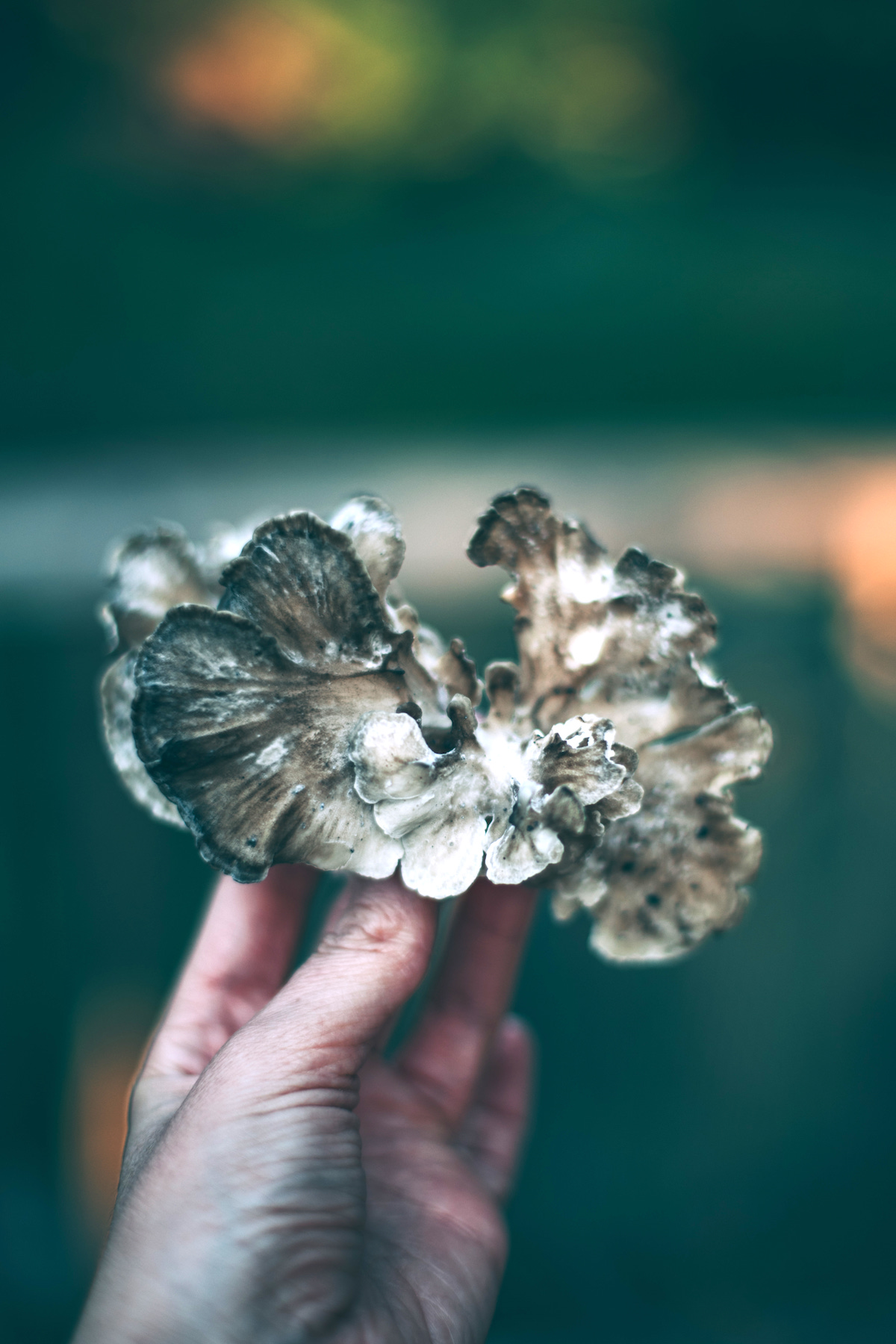
Hen of the Woods Mushroom Look A-likes
There aren’t many lookalikes, although it could be confused with either “The Black-Staining Polypore” (Meripilus sumstinei) or “The Giant Polypore” (Meripilus giganteus). Both of these species stain black when bruised whereas Hen of the Woods does not.
It is also not to be confused with “Chicken of the Woods” (Laetiporus sulphureus) which looks very different but has a similar name.
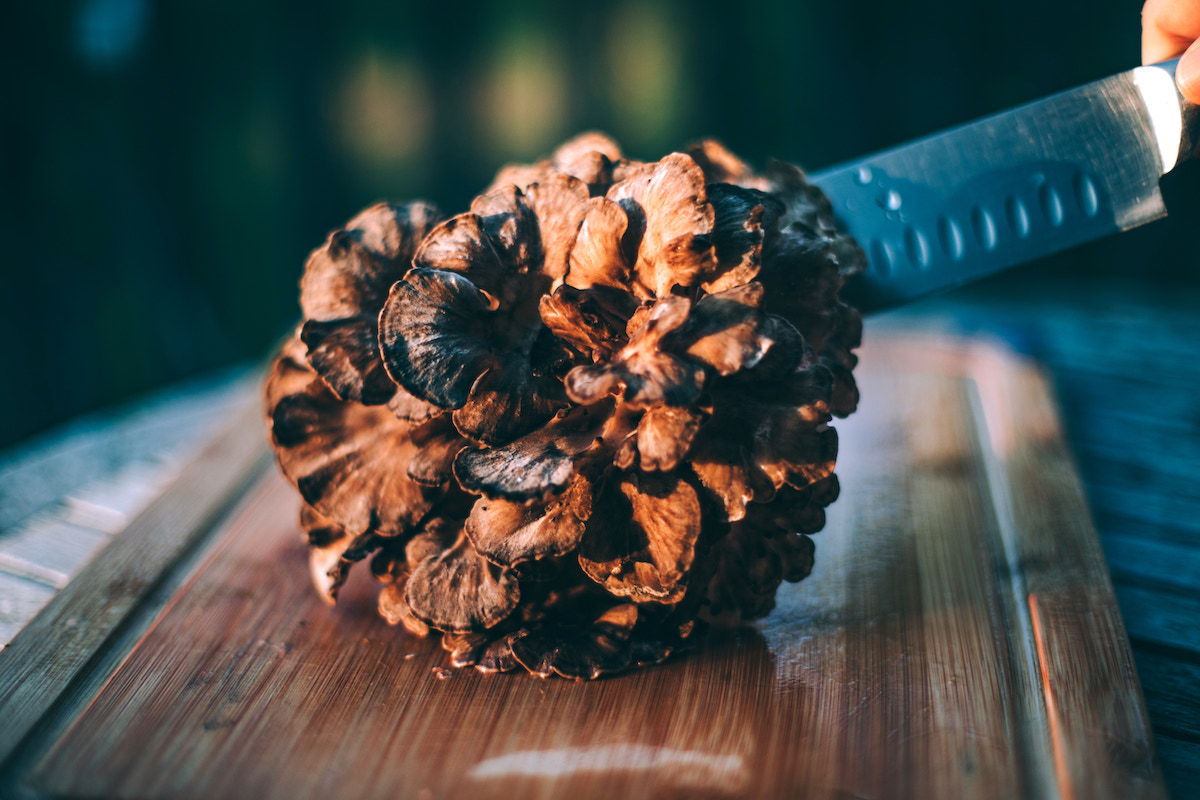
Harvesting Hen of the Woods Mushrooms
Harvesting of any wild-food item should always be done with respect and gratitude. Not only for the mushroom, but also for the tree host and all neighboring organisms in the woodland. Also, consider other foragers who may have been harvesting from this location for years before you knew about it.
Hen of the Woods should be harvested at the right time in their growth cycle. You do not want to harvest “baby” mushrooms which still have potential for growth, but you also don’t want to harvest mushrooms that are too old and tough.
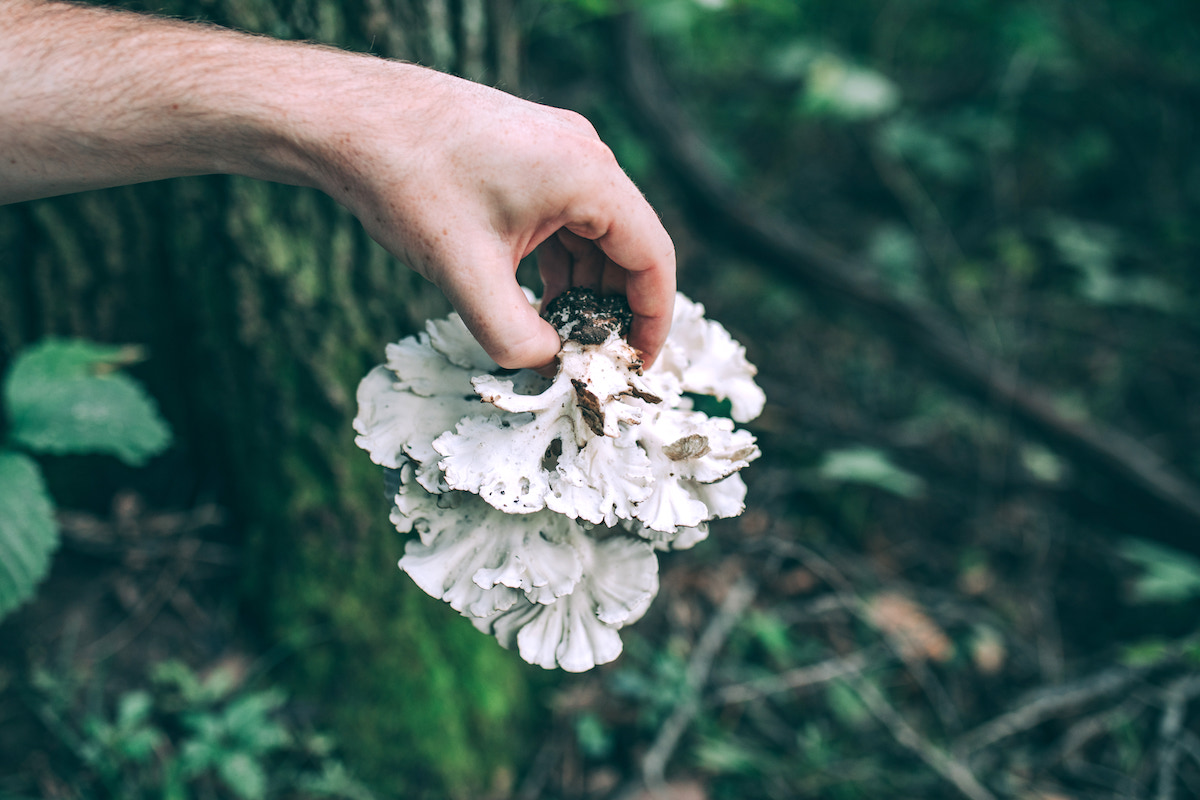
The mushrooms should be old enough to have opened up but young enough for the flesh to be soft and spongy. Do not bother harvesting anything that is old or leathery, as this will probably just cause you digestive problems!
While it can be tempting to take as much as you can, only harvest what you need and are willing to preserve and eat.
Leave some clusters untouched for wildlife and perhaps even for other foragers.
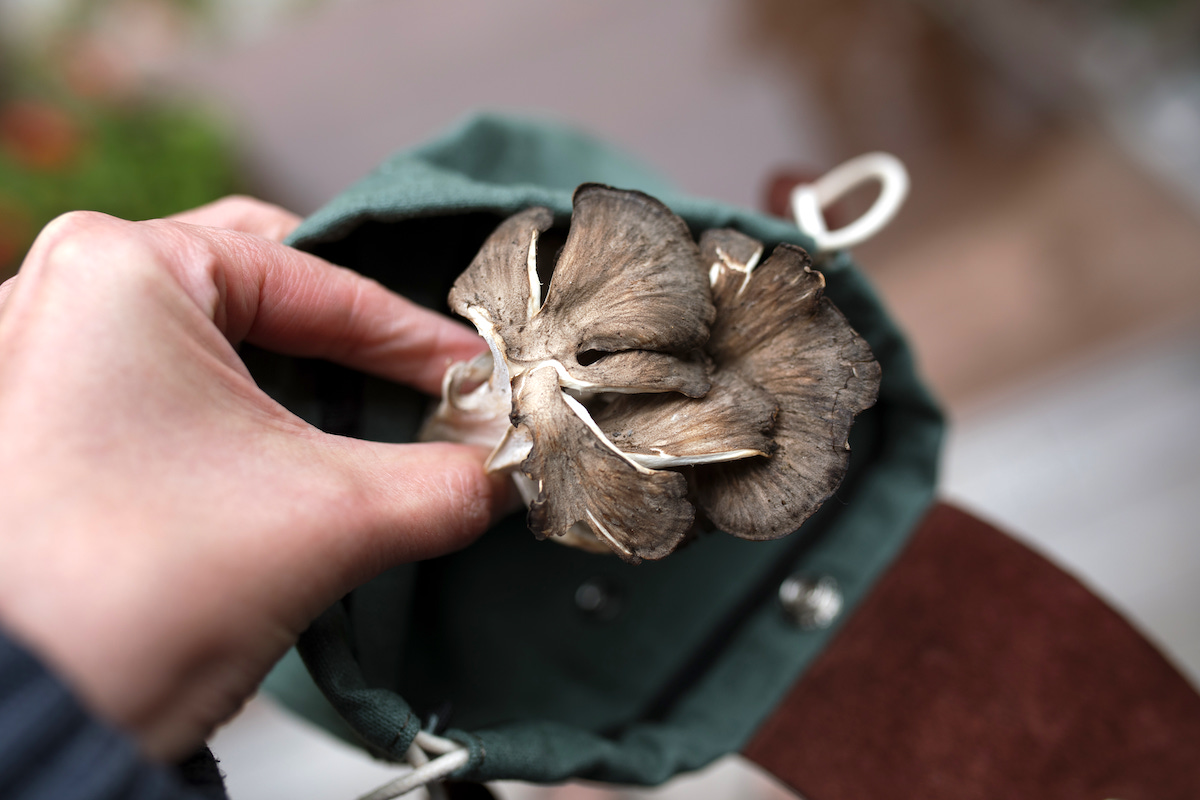
How to Use Hen of the Woods Mushrooms
The first step in preparing Hen of the Woods is cleaning. Due to the complex structure of the mushroom, it is not uncommon for it to be full of leaves, dirt, and other forest materials. While certain mushrooms should not be washed with running water, Hen of the Woods is an exception. To make cleaning easier, cut it into many smaller pieces.
When it comes to recipes, the sky’s the limit. Hen of the Woods has a delicious umami flavor and tender but meaty texture that is applicable to any savory recipe you dream of.
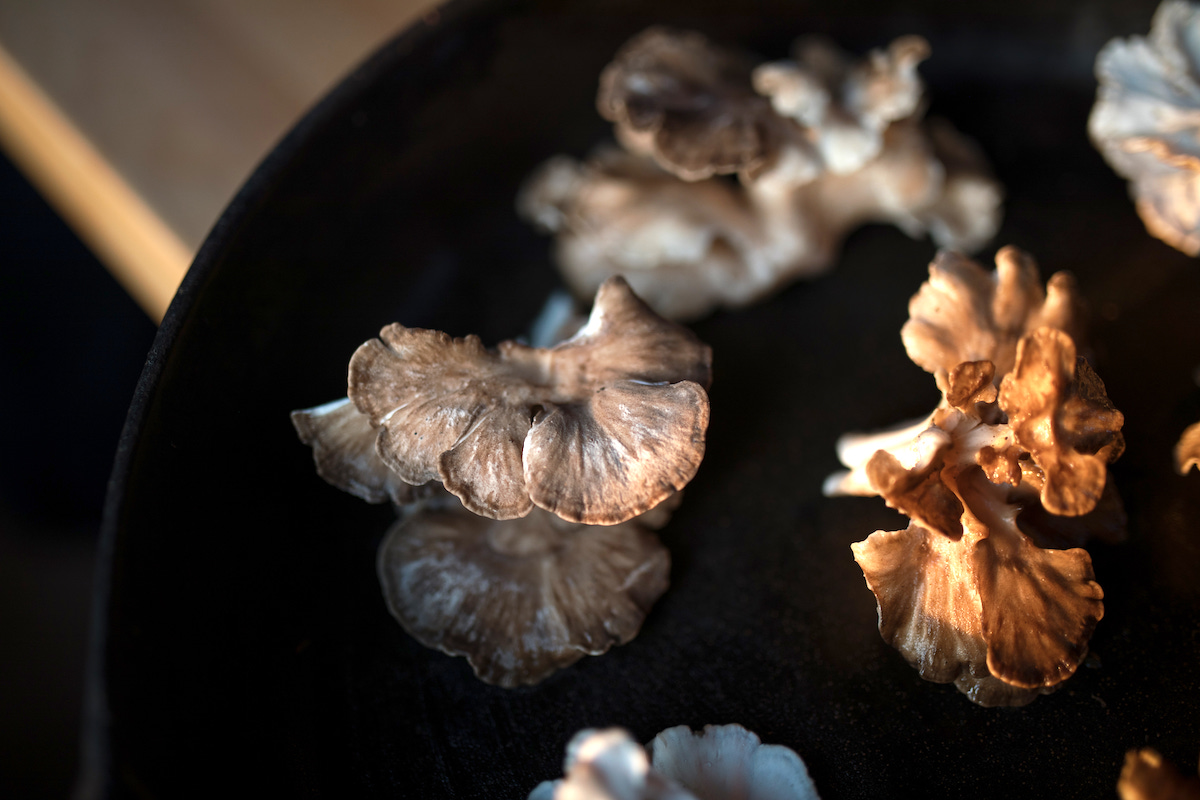
Simply stir-fry it alongside any meal or add it as a garnish. It goes great with eggs, soups, pasta, and alongside meat. You can marinate the mushrooms before cooking to incorporate any flavor you’d like. If you want them to be extra-meaty, leave them in large chunks before cooking and sear them on a hot pan.
One interesting note is that Hen of the Woods contains proteolytic enzymes which will soften tough-meat. To do this finely chop the raw mushrooms and leave them to sit with the raw-meat for a couple hours. Likewise, this enzyme will prevent the coagulation of egg, so always cook it before adding them into a scramble!
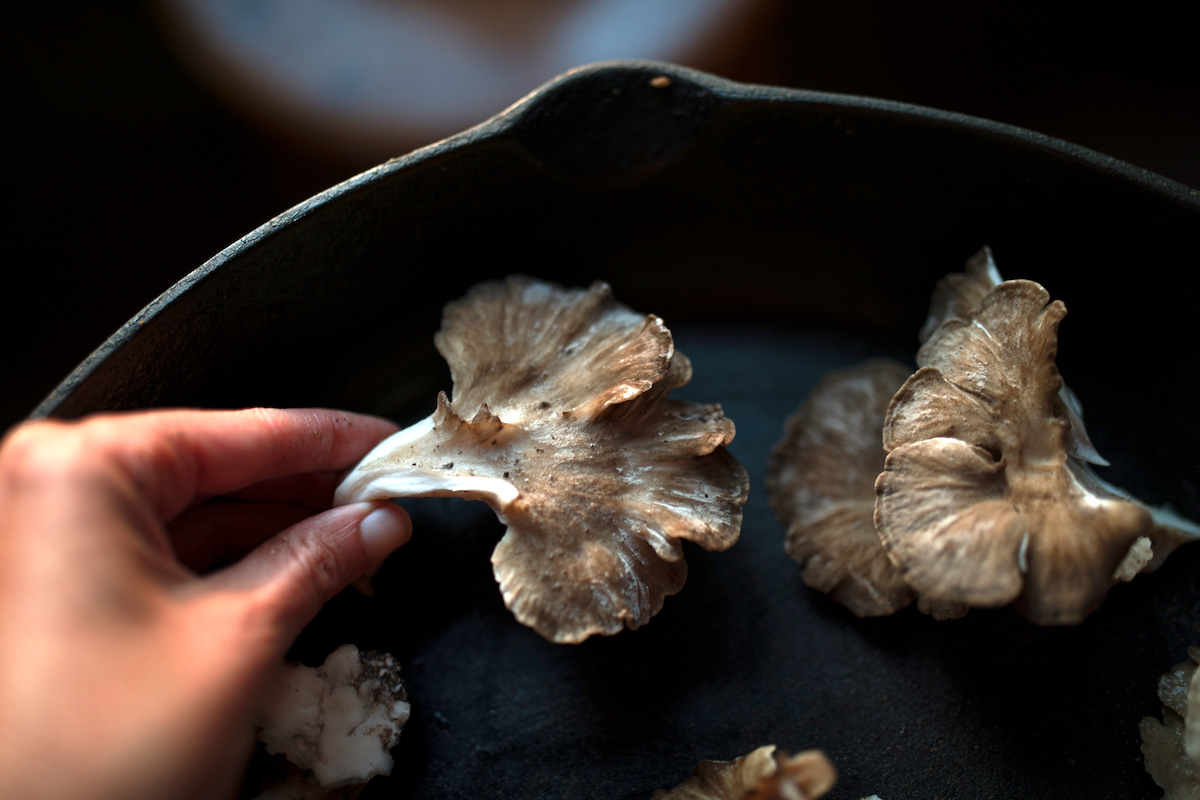
Preserving Hen of the Woods Mushrooms
It is not unheard of for people to harvest over 100lbs of Hen of the Woods at a time. If that’s the case, you better have a lot of friends to share them with or know how to properly preserve it. Thankfully, even if you’re a solitary hermit living in the woods these store great if properly preserved.
- Drying ~ Drying is an excellent option for Hen of the Woods. It re-hydrates quite well and can then be used just like a regular mushroom.
- Pickling ~ Hen of the Woods can be made into vinegar pickles or lacto-fermented pickles. Just boil the mushroom for 5 to 10 minutes until tender then use it in the pickle recipe of your choice.
- Freezing ~ Cut the mushroom into pieces, cook them thoroughly, and then freeze! You can preseason or salt if you like. Do not freeze raw mushrooms as it will result in quite an unpleasant slimy texture!
- Making Jerky ~ Marinate, cook, and dry the mushrooms! This makes a perfect snack for your next mushroom-hunt.
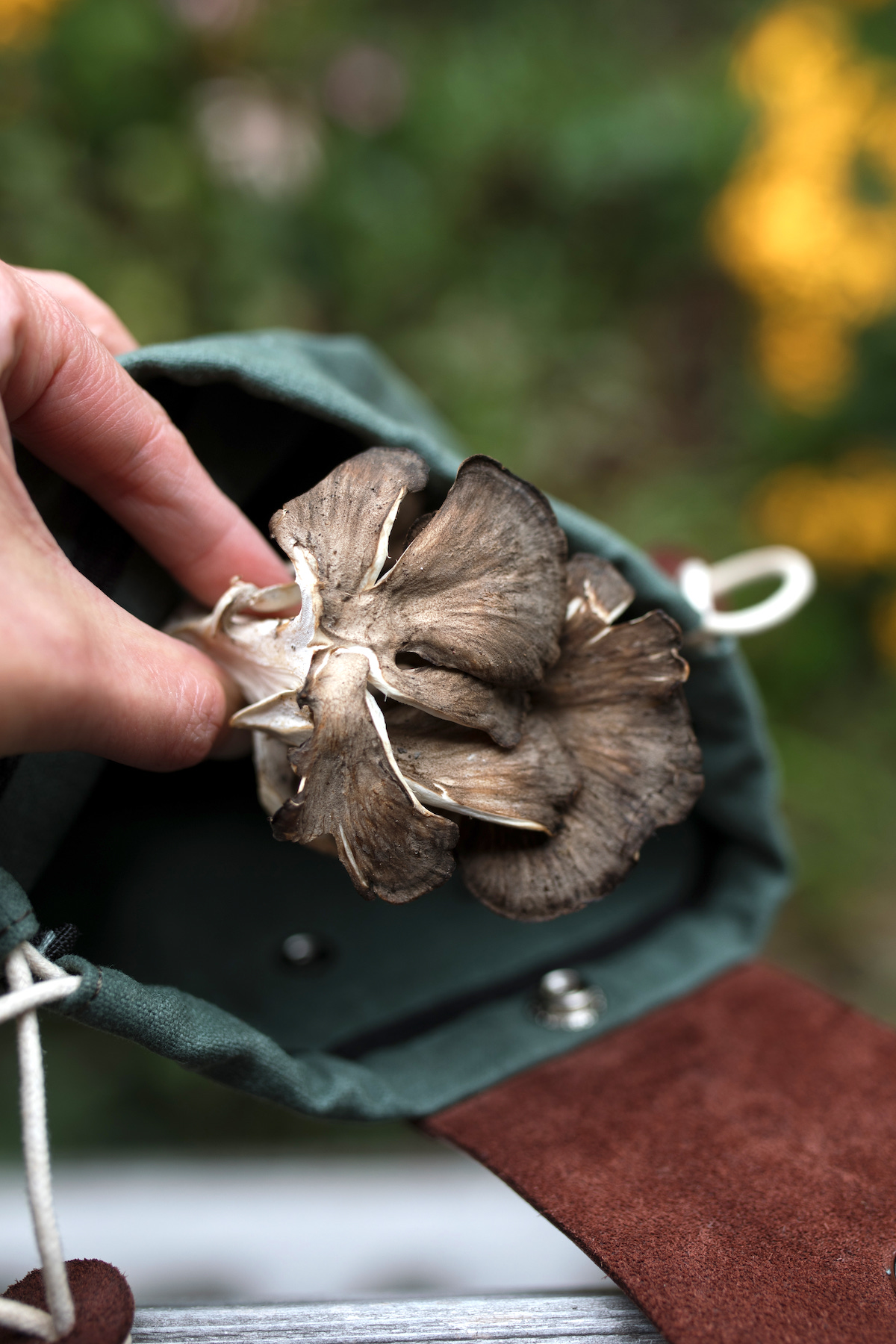
This article was written by Timo Mendez, a freelance writer and amateur mycologist who has foraged wild mushrooms all over the world. Photos by Stephanie Mary of My Tiny Laguna Kitchen.
Mushroom Foraging Guides
Looking for more mushroom foraging guides?
- Morel Mushrooms
- Chaga Mushrooms
- Birch Polypore
- Tinder Polypore
- Witches Butter Mushrooms
- Puffball Mushrooms
- Shaggy Mane Mushrooms
- Reishi Mushrooms
- Turkey Tail Mushrooms
- Dryad’s Saddle
